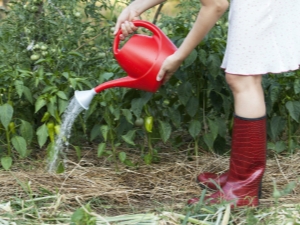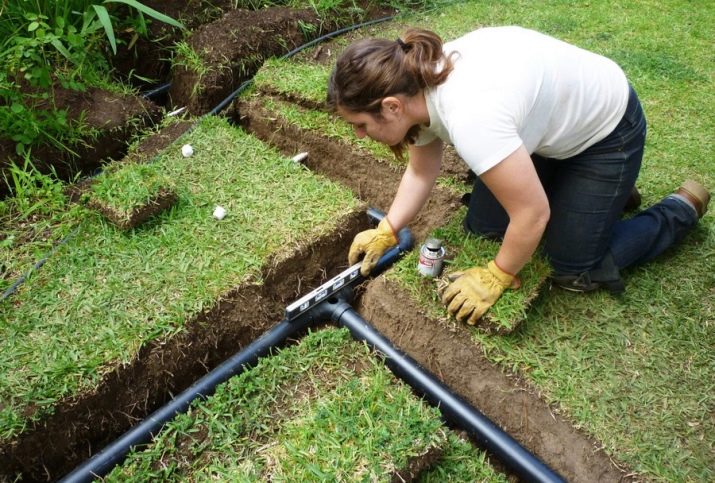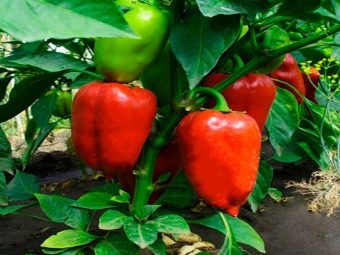How often to water the pepper in open ground?

Gardeners and gardeners now have the opportunity to grow a variety of crops on their plots. Many make a choice in favor of sweet or bitter peppers, because this tasty and healthy vegetable is very popular with both children and adults, it can be planted both in greenhouses and in the open field. However, this plant is very fastidious and requires proper care. One of the main issues faced by summer residents is how often you can water the pepper.
General rules
With pepper you can cook a variety of dishes. He is a full member of the holiday table, so many gardeners tend to grow it in their plots. However, we must not forget that the case is not limited only to the cultivation of seedlings and its planting on the beds. Like other vegetables, pepper needs to be watered, because it depends on watering how good the harvest will be. First of all, it is necessary to take into account that pepper does not need excessive soil moisture, therefore it should be watered less often than other vegetables, otherwise there is a risk of over-wetting the soil, which can lead to unpleasant consequences.
Watering this vegetable growing in the open field, there is nothing difficult. To do this correctly, you should follow the basic recommendations. The earth should be saturated with moisture evenly, to a depth of a little more than half a meter. It is not necessary to pour the soil around the plant itself.
If you make a small depression near the bush, water will flow directly to the roots, not spreading along the ground. And also it is necessary to adhere to irrigation and irrigation norms, to determine the method of irrigation.
It should be borne in mind that watering peppers planted in open ground is recommended in the morning and evening. If you do it during the day, especially in hot and dry weather, bright sunshine when in contact with water can work like a magnifying glass, and burns appear on the leaves of the plant, sometimes quite strong. In order for peppers to grow well, it is impossible to water them with cold water, because this can adversely affect the root system.
Irrigation schemes may be several. This is drip or fine irrigation, sprinkling, subsurface irrigation, as well as the surface method. To understand their differences, you need to consider each in more detail.
Irrigation drip
This method is very popular among gardeners and is used for a long time. When drip irrigation is necessary that the access zone was the source of water supply. It connects to the hose, which has a special filter, as well as external and internal droppers. Drip irrigation, according to gardeners, is one of the best options for watering plants planted in open ground. The advantages of irrigation using droppers on the hose are as follows:
- no hard crust will form on the ground, which eliminates the need for periodic soil loosening;
- the root system will be able to fully develop due to the uniform soil moisture, which will allow the plant to assimilate nutrients and trace elements well;
- water will be used very economically, without moistening the foliage;
- This method is to prevent the emergence of weeds and their active growth.
Surface mode
With it, the soil creates the necessary reserve of water plants. This method is best used in hot and dry weather. There are several options for such irrigation. It is necessary that the water flowed to the peppers gradually, this requires making the grooves, taking into account the slope of the site. If the bushes are planted in different parts of the garden, watering should be carried out in bowls. This is done so that one ditch is filled with the necessary amount of water. Watering checks is relevant when there are square-shaped wells.
This type of watering is quite laborious and takes more time, but when using it you can be sure that vegetables will receive the required amount of water.
Fine irrigation
It is not recommended to use this method yourself, the best option is to combine it with drip irrigation. Therefore, this type of watering is not widely used in gardeners. With this method, the foliage is necessarily sprayed with water coming from above. The preferred use of small droplets.
Most often, this type of irrigation is carried out in hot weather during the day. This is necessary to allow the bush to cool without affecting the tops.
Subsurface watering
Subsurface watering is a rather complicated method for which special pipes need to be laid in the ground. The flow of water occurs gradually, so the plants are provided with moisture in sufficient volume.
The undoubted advantage is that in this case it is not required to loosen the soil. The water used for subsurface irrigation can be any, since the flow of germs to the peppers in this case is excluded.
Sprinkling
We can say that sprinkling is the best way to water the peppers. However, in this case, a special apparatus is needed that will irrigate the bushes. Such plants are sold in specialized stores and have a fairly reasonable price, which allows gardeners to enjoy using these plants, which, among other things, are very light and compact. The conditions in which the peppers are grown are not an obstacle to the implementation of this method.
The only limitation is that the sprinkling should not be used if it is too hot outside, as moisture for the soil will not be enough regardless of how you adjust the device.
Culture needs
Starting to grow peppers on their plots, many have difficulty understanding how to water it in summer. In fact, in hot weather, the culture requires the most thorough care, since high temperatures will certainly cause the soil to dry out. In some cases, you need to water the bushes every day, in the morning or evening. Peppers do not tolerate cold water, so you need to use only warm water for irrigation. This is especially true for gardeners living in the northern territories. Tap water is not the only option; it would be appropriate to use rainwater, which you need to collect in advance in specially prepared containers.
The best way to prepare the liquid for irrigation is to boil water in a large bucket, let it cool, and then proceed to the procedure. A simpler way is to put containers in the street under the sun. On a warm day, the water will quickly warm to a temperature that is comfortable for watering. If the heat is very strong, the rate for one pepper bush is from 1 to 3 liters of water per day.
It is best to perform a watering procedure in the morning before the sun rises. It is not recommended to water the garden during the day.
For a good growth of culture, it needs fertilizing. Watering also plays a very important role in their learning. The better the bed is watered, the deeper the useful elements fall into the ground, which contributes to their simpler assimilation. This, in turn, will have a beneficial effect on the health of the plant and its fruits. After the plant has bloomed and the first fruits appeared on it, it is necessary to treat watering even more responsibly. This applies to root irrigation.
Irrigation should be carried out at least 2 times a week. By approximate calculations, 1 square meter of a bed demands about 11 liters of water. In rains and thunderstorms, this amount may vary. In situations where peppers are watered only once a week, up to 16 liters of liquid will be required for the same area. The water temperature should be from +24 to +27 degrees.
Periodicity
Gardeners, for the first time taking up the cultivation of pepper, often make one common mistake, namely, they water more vegetables than they need.This can have a very negative impact on the crop, since the increased humidity can cause a decrease in the number of fruits in the future harvest. To avoid this problem, you need to take into account certain factors that affect the frequency of irrigation. For example, it is necessary to assess the humidity of the air, how long the growing season was, on what soil the peppers grow, what kind of peppers they are, and also to take into account weather conditions and temperature. If the soil is too dry, it can be detrimental to pepper, so the regularity of watering in such conditions is very important. When the pepper is just beginning to develop, it is enough to water it once a week. As soon as the bushes begin to bloom, the number of procedures should be increased to two times.
After planting the bushes in open ground, you must immediately water them. This will help the seedlings to gain a foothold in the new place and more reliably survive the adaptation process. The second time to water the vegetables need 5-6 days, and then - once a week or one and a half. Pepper does not like humidity, so the first time on one bush is enough to spend from one to one and a half liters of water, after which its volume should be increased, gradually increasing to 3 liters.
Thanks to this method, the leaves will not develop as actively, and the stem will not break under the weight of the tops.
Towards the middle of summer, it is necessary to begin to spend 3 liters of water on each bush, the procedure should be repeated every 8–10 days. Far off it is useful to loosen the soil at a frequency of 1 time in 2 weeks. This is necessary in order to saturate the roots with oxygen, and also helps to fight insects. Feeding and spraying, eliminating pests, will help the culture to grow better and gain strength. When 2-3 weeks are left until the fruits are picked, watering is no longer necessary.
What is dangerous overmoistening?
Waterlogging can create serious problems for the pepper bushes. There are two main reasons for this.
- If watering too often, there is a danger of oxygen starvation, since excessively wet soil slows down the access of oxygen to the roots of the plant. As well as moisture can provoke processes of decay, which in some cases leads to the death of the vegetable.
- A moist environment is an ideal condition for the reproduction of a fungus. This infection is quite difficult to remove, in addition, its spores can be transmitted using water, so that there is a danger of infection of nearby cultures.
Important: eliminating waterlogging, gardeners have the opportunity to prevent the development of two troubles at once.
How often to water the pepper, see the next video.





































